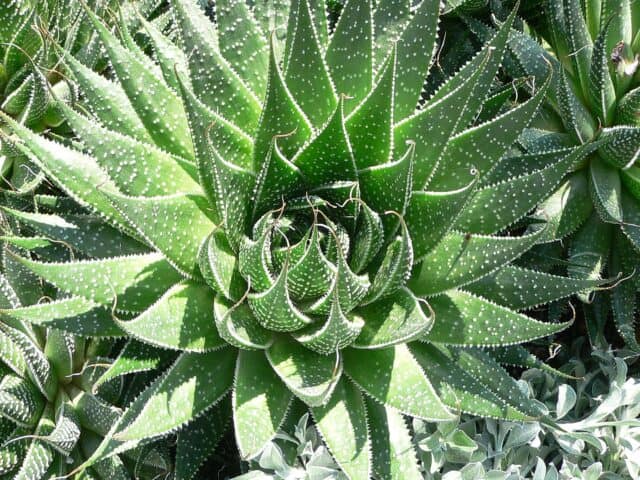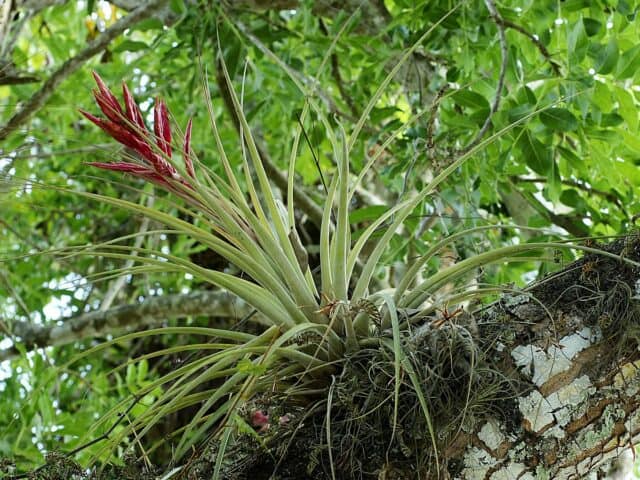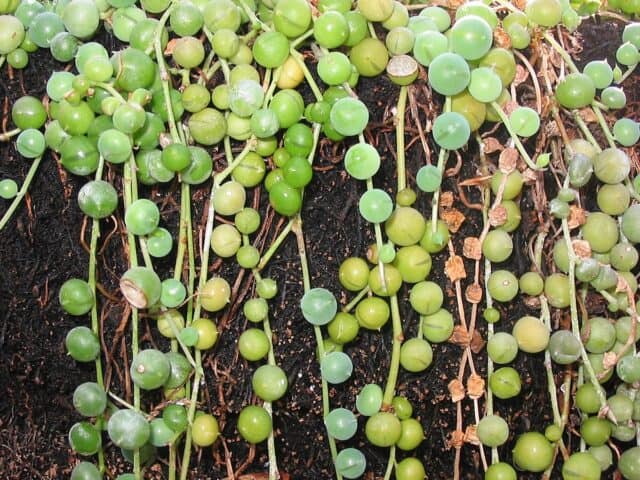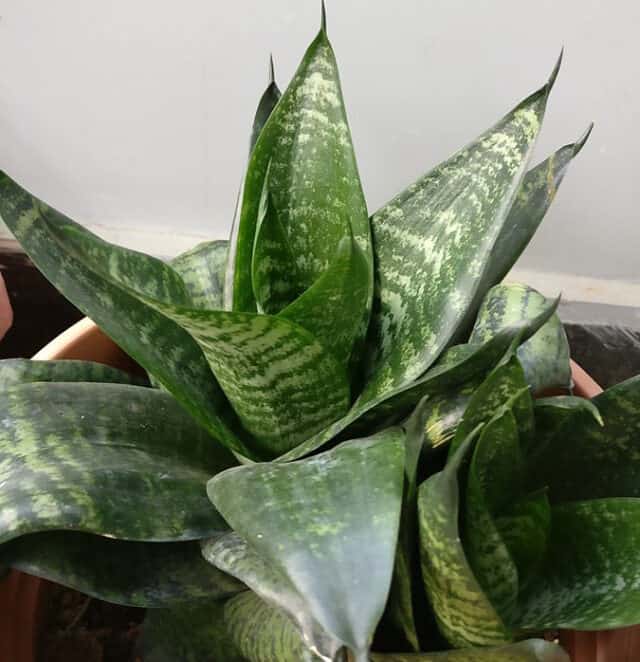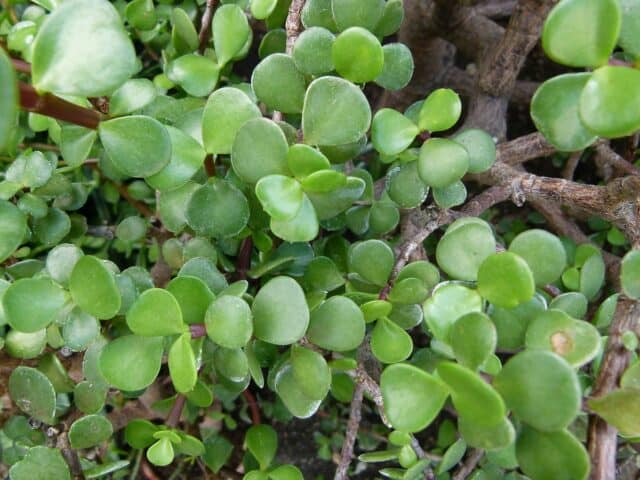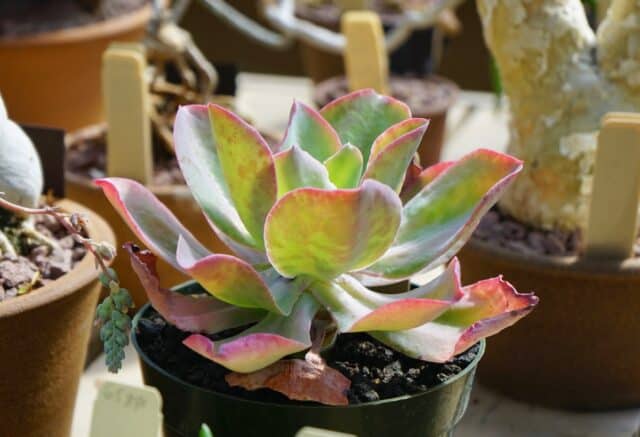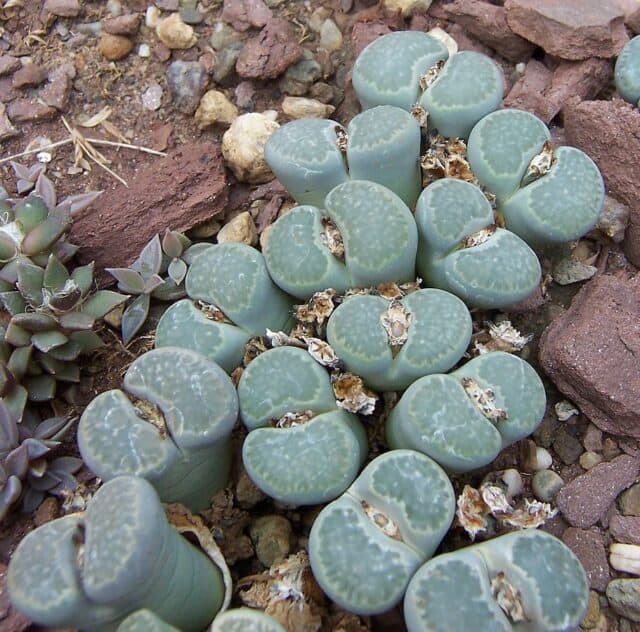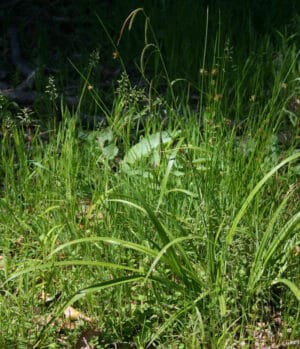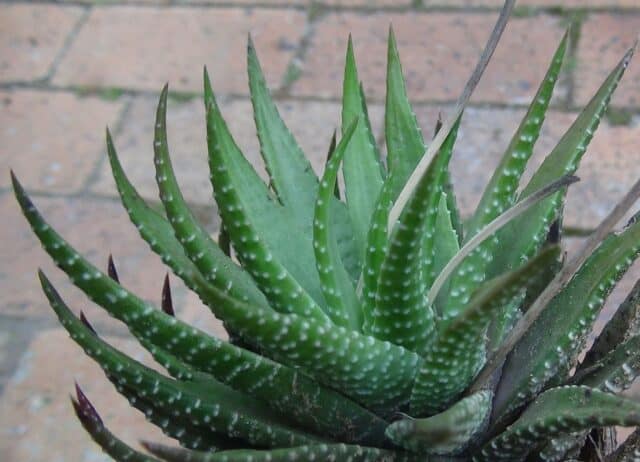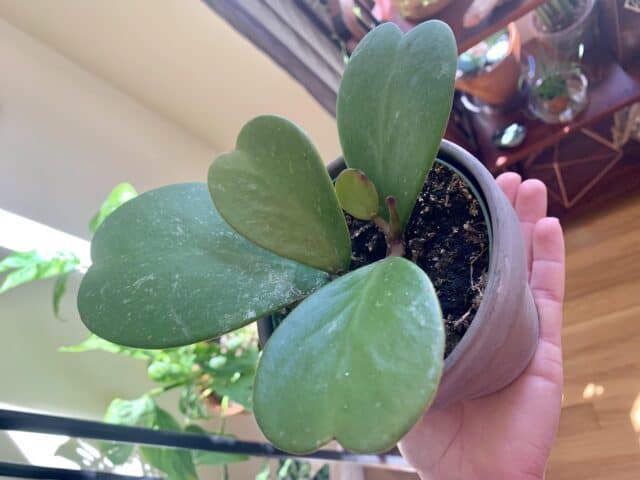Choosing the best plants for leopard gecko tanks enhances the enclosure’s environment. Plants offer multiple benefits, from improving air quality to mimicking the gecko’s natural habitat. Live plants especially play a crucial role in the well-being and comfort of leopard geckos. This article delves into the top real and artificial plants suitable for leopard gecko tanks and provides guidelines on their care.
Natural Environment: Incorporating both real and artificial plants in a leopard gecko tank creates a more naturalistic environment, helping reduce stress and boredom for the gecko.
Air Quality & Humidity Regulation: Real plants, such as Aloe Vera and Snake Plants, improve air quality by absorbing carbon dioxide and releasing oxygen. They also aid in maintaining ideal humidity levels within the tank.
Maintenance Difference: Real plants require specific care routines, including consistent watering, pruning, and monitoring of sunlight exposure. In contrast, artificial plants are low-maintenance but need regular cleaning.
Plant Choices Matter: It’s crucial to choose suitable plants for the leopard gecko’s environment. For instance, the Living Stones (Lithops) thrive in dry conditions and add visual interest, while the Sweetheart Hoya needs warm temperatures and indirect light with a UV lamp.
Temperature Balance: Both plants and leopard geckos have temperature needs. Ensure the tank’s environment, especially if real plants are used, stays within a suitable range for all inhabitants. For example, the Elephant Bush can handle temperatures up to 110°F.
Benefits of Having Plants in Leopard Gecko Tanks

Introducing plants into a leopard gecko tank offers a myriad of benefits. For starters, plants help in creating a naturalistic environment. This mimics the gecko’s wild habitat, making them feel more at home. This familiar setting can alleviate stress and boredom, ensuring the reptile remains active and healthy.
Beyond aesthetics, plants play a vital role in maintaining a healthy environment inside the tank. They improve air quality by absorbing harmful pollutants and releasing fresh oxygen. This is especially true for live plants. Live plants, in particular, are efficient in absorbing carbon dioxide and releasing oxygen, ensuring the gecko has a fresh supply of air. Moreover, they act as a water source, especially in conditions where humidity is essential. Geckos can sip water droplets from plant leaves, keeping them hydrated.
Another advantage of live plants is their ability to regulate humidity levels within the tank. They release moisture, ensuring the environment doesn’t become too dry for the gecko. Additionally, plants provide essential hiding places. These spots allow geckos to rest, hide, or even hunt, mimicking their natural behavior in the wild.
15 Real Plants Great For a Leopard Gecko Tank
Selecting the right plants for a leopard gecko tank can be a game-changer. Not only do they enhance the visual appeal, but they also contribute to the overall well-being of the gecko. In the sections that follow, we’ll explore 15 real plants that are both safe and beneficial for leopard gecko enclosures. Each plant comes with its unique set of advantages and care instructions to ensure a thriving environment for your pet.
1. Aloe Vera
Aloe Vera stands out as a top choice for leopard gecko tanks. One of its primary benefits is its ability to enhance the tank’s environment by purifying the air. As Aloe Vera absorbs carbon dioxide, it releases oxygen, significantly improving air quality within the enclosure. This ensures your gecko has a constant supply of fresh air.
A significant advantage of Aloe Vera is its adaptability. This plant is resilient and can thrive in various conditions, making it suitable for different gecko tank setups. There are also multiple varieties of Aloe Vera available, allowing owners to choose one that best fits the size and aesthetic of their tank.
2. Christmas Cactus (Schlumbergera)

The Christmas Cactus (Schlumbergera) is a distinctive plant characterized by its segmented leaves and vibrant flowers that typically bloom around the holiday season. Its appearance is marked by arching stems and bright flowers that can range from pinks to reds and even purples. Growth habits of the Christmas Cactus are unique; it tends to grow horizontally, making it perfect for terrariums with more floor space.
One of the primary reasons it’s an excellent choice for a leopard gecko tank is its non-toxic nature. This ensures the safety of the gecko if it decides to interact or nibble on the plant. The Christmas Cactus thrives in low to moderate light conditions, making it adaptable to various tank setups. It also has a tolerance for low to moderate humidity, aligning with the needs of a leopard gecko’s environment. Furthermore, this plant comes with minimal maintenance needs. Regular watering, ensuring the soil is moist but not soggy, and occasional pruning to maintain its shape, are all it requires.
3. Jade Plant (Crassula Ovata)
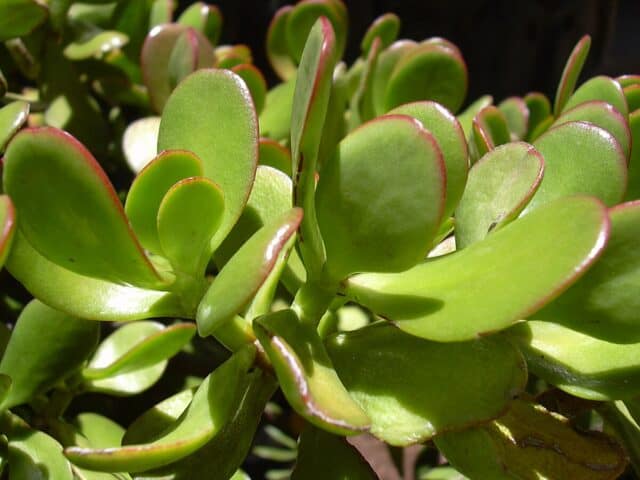
The Jade Plant, scientifically known as Crassula Ovata, is a popular choice for many reptile enthusiasts. Recognized for its hardy succulent nature, this plant boasts thick, fleshy leaves that store water. These leaves have a vibrant green color, and the plant can occasionally produce small pink or white flowers.
In the context of leopard gecko enclosures, the Jade Plant offers several benefits. Its dense growth provides a natural, cozy hideout, allowing geckos a space for rest and privacy. The plant’s robust nature means it can withstand the occasional nibbling by curious geckos without causing harm. Moreover, its water-storing capabilities can be beneficial in regulating the tank’s humidity.
4. Pink Quill (Wallisia Cyanea)
The Pink Quill, known scientifically as Wallisia Cyanea, is a distinctive plant with specific care needs and characteristics. It possesses a unique growth habit, with its vibrant pink bracts from which blue flowers emerge, making it a visual delight. The plant’s mounding leaves not only add to its beauty but also serve as ideal hiding spots for leopard geckos, giving them a sense of security and privacy.
When it comes to care requirements, the Pink Quill is relatively low maintenance. It has a high tolerance for dry environments, aligning well with the natural habitat of leopard geckos. For optimal growth, it requires indirect or artificial light, ensuring the plant remains healthy without being exposed to harsh sunlight. A consistent monthly watering schedule is sufficient, with a focus on letting the soil dry out between watering sessions to prevent overhydration.
5. Air Plants (Tillandsia)
Air Plants (Tillandsia) are versatile additions to a leopard gecko tank. These unique plants come with a slew of benefits. One of the most remarkable traits of Air Plants is their ability to grow without soil. They attach themselves to other plants, rocks, or even the walls of the enclosure. This feature allows for a diverse range of placement options within the tank.
There are various varieties of Tillandsia available, each offering a distinct appearance and size. From thin, spiky leaves to broader, flatter varieties, there’s an Air Plant to fit every aesthetic preference. Regardless of the variety, these plants are known for their resilience. They can comfortably handle temperatures up to 90°F, making them suitable for the warm environment of a leopard gecko tank.
Care requirements for Air Plants are straightforward. Unlike traditional plants, they absorb moisture through their leaves rather than roots. To keep them hydrated, a regular misting every few days is recommended. Additionally, a deeper soaking every 10 days to 2 weeks will ensure they remain well-hydrated. It’s essential to let them dry out completely between waterings to prevent rot.
6. Hens and Chicks (Sempervivum)
Hens and Chicks (Sempervivum) are delightful succulents known for their unique rosette appearance. These plants come in a wide range of colors, from vibrant greens to deep purples, and even some with a touch of bronze or red. The leaves are equally varied, displaying various textures, from smooth to slightly hairy, and often having distinct patterns and edges.
These succulents naturally prefer cooler climates, but they can adapt well to indoor settings, especially within a leopard gecko enclosure. Given their preference for abundant light, it’s advisable to use a UV lamp in the leopard gecko habitat to ensure they receive the necessary illumination. This added light not only benefits the Hens and Chicks but can also be advantageous for the gecko’s health.
Maintenance of Hens and Chicks involves periodic attention. Over time, some rosettes may die off. It’s essential to remove dead rosettes to maintain the plant’s health and appearance. Fortunately, these plants naturally produce offshoots, often referred to as “chicks”, that can be used to fill in gaps left by the removed rosettes. This process not only rejuvenates the plant cluster but also ensures a continuous cycle of growth.
When it comes to watering, these succulents require minimal attention. Watering them two to three times per month is sufficient, ensuring the soil dries out between sessions.
7. String of Pearls (Senecio Rowleyanus)
String of Pearls (Senecio Rowleyanus) is a captivating succulent that originates from southwest Africa. Its name is derived from its unique trailing growth habit, where spherical, pea-like leaves dangle delicately from thin stems, resembling a string of pearls. This low-growing plant sprawls horizontally, making it an ideal choice for tanks with a generous amount of floor space.
One of the advantages of String of Pearls is its ability to flourish in the warm environment typical of a leopard gecko tank. While the plant is known to produce dainty white flowers when exposed to cooler temperatures, it’s important to note that blooming within the consistently warm confines of a gecko enclosure is less likely. Nonetheless, even without blooms, its distinctive appearance adds a touch of elegance and intrigue to any terrarium.
8. Snake Plants (Dracaena Trifasciata)
Snake Plants, scientifically known as Dracaena Trifasciata, are a popular choice for many reptile enthusiasts, and for good reasons. In a Leopard Gecko tank, they bring numerous benefits. One of the standout features of Snake Plants is their hardiness. These plants are resilient, capable of enduring a variety of conditions, making them a hassle-free addition to a gecko habitat.
Another notable benefit is their air purification capability. Snake Plants are known to filter out common indoor air pollutants, improving the overall air quality within the tank. This not only benefits the resident gecko but also promotes a healthier environment for any accompanying flora.
For those concerned about the potential height of Snake Plants, there’s a solution. With regular pruning, it’s possible to maintain a shorter stature for the plant, ensuring it doesn’t dominate the tank’s space. Using sharp, clean scissors or pruning shears, simply cut the taller leaves back to your desired height. This not only helps control the plant’s size but also encourages denser growth.
Given their vertical growth pattern, Snake Plants are especially suited for taller tanks. They can create a backdrop that mimics the natural vertical structures found in many reptiles’ native habitats. Moreover, while they love warmth, Snake Plants can also thrive in cooler temperatures, offering flexibility in placement within the tank.
9. Elephant Bush (Portulacaria Afra)
The Elephant Bush, known scientifically as Portulacaria Afra, is a visually striking plant, often recognized for its distinctive reddish-brown trunks and stems. Complementing these earthy tones are its small glossy green leaves which, under the right conditions, can be adorned with delightful blooming clusters of white, pink, or purple flowers.
One of the most remarkable features of the Elephant Bush is its potential growth. In the wild, this plant can soar up to 10 feet tall. However, those who might find this height a tad overwhelming in a contained environment need not worry. With regular trimming and maintenance, the Elephant Bush can be kept at a more manageable size, tailored to the specifics of your Leopard Gecko tank.
In terms of care requirements, the Elephant Bush is relatively low-maintenance. It boasts a resilience to heat, being able to tolerate temperatures reaching up to 110°F. When it comes to hydration, overwatering is a more common mistake than underwatering. It’s best to water this succulent once or twice a month, ensuring that the soil has completely dried out between watering sessions.
10. Echeveria
Echeveria is a popular choice for many reptile enthusiasts, and it’s easy to see why when considering its suitability for leopard gecko tanks. Originating from the semi-desert regions of Central America, Echeveria has naturally adapted to thrive in arid conditions. This resilience is largely due to its thick, fleshy leaves, which have evolved to store water, ensuring the plant can survive during prolonged dry spells.
In terms of maintenance, Echeveria plants are a dream for those who might not have the greenest of thumbs. Their low-maintenance nature means they require minimal attention, yet they continue to flourish, adding a touch of natural beauty to any environment. Moreover, their water-storing capabilities provide an added advantage in a leopard gecko tank, serving as a secondary water source for the inhabitant.
11. Living Stones (Lithops)
Living Stones, scientifically known as Lithops, are fascinating plants that certainly live up to their name. At first glance, they bear a striking resemblance to pebbles, blending seamlessly into their surroundings. This pebble-like appearance is not just for show; it’s a survival tactic that helps them avoid being eaten in their native habitats. Known for their hardiness, these plants have evolved to thrive in dry environments, making them well-suited for a leopard gecko tank.
While they might not serve a significant functional purpose within the terrarium, their intriguing look undoubtedly adds a unique visual interest to the enclosure. For those considering adding Living Stones to their setup, there are some key care aspects to note. These plants prefer well-draining soil to prevent root rot. Given their adaptation to arid conditions, they require infrequent watering. When deciding on placement within the terrarium, it’s best to position them on the warm side to mimic their natural habitat.
12. Sedge Grass (Carex Pendula)
Carex Pendula, commonly known as sedge grass, is an adaptable plant that can be a unique addition to a leopard gecko tank. Its primary characteristic that stands out is its ability to tolerate arid, desert-type landscapes. This drought-tolerant nature ensures the plant’s survival even in conditions where water is scarce.
Visually, sedge grass is known for its cascading mounds, which can create a dynamic visual effect in the enclosure. However, depending on the variety, this grass can grow quite large, making it essential to be aware of its potential size.
For those keen on introducing sedge grass to their leopard gecko tank, it’s advisable to choose smaller varieties. This is to ensure the enclosure doesn’t get overcrowded, leaving ample space for the gecko to move and explore. As for care, due to its drought-tolerant nature, sedge grass doesn’t require frequent watering. Yet, it’s essential to provide it with enough moisture to thrive.
When it comes to placement within the terrarium, ensure it gets enough light and space to grow without hindering the gecko’s activities.
13. Zebra Cactus (Haworthia Fasciata)
The Zebra Cactus, scientifically known as Haworthia Fasciata, is a popular choice for leopard gecko tanks due to its unique appearance and minimal care requirements. As its name suggests, this succulent sports pointy green leaves adorned with white stripes, mimicking the pattern of a zebra. The aesthetic appeal of the Zebra Cactus can elevate the overall look of any leopard gecko enclosure.
When it comes to care requirements, the Zebra Cactus is quite undemanding. It thrives under ideal conditions of moderate light and well-draining soil. Being a slow-growing succulent, it doesn’t need frequent repotting or major interventions. Its water requirements are typical of succulents: it prefers infrequent but deep watering, allowing the soil to dry out between watering sessions.
What makes the Zebra Cactus stand out is its suitability for beginner plant enthusiasts. Its minimal care needs make it a go-to for those who are new to the world of terrarium plants or those who prefer low-maintenance additions to their enclosures.
14. Peperomias (Radiator Plants)
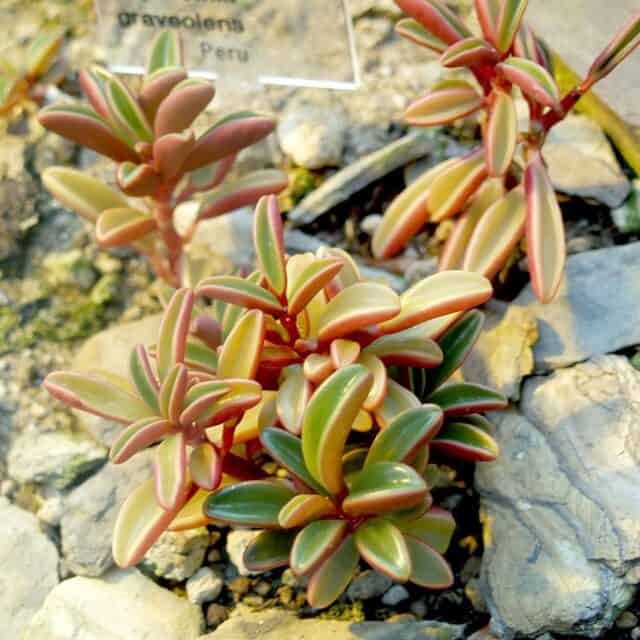
Peperomias, commonly referred to as Radiator Plants, are versatile additions to leopard gecko tanks. Their unique appearance – characterized by thick, fleshy leaves that can be variegated or solid in color – makes them stand out, offering an aesthetic appeal. Beyond looks, Peperomias are admired for their low-maintenance care. They are adaptable plants, adjusting well to different lighting setups in gecko enclosures, be it low light or bright conditions.
However, for optimal growth, Peperomias prefer bright, indirect light. Their need for well-draining soil ensures that their roots remain healthy and free from rot. An added advantage of having Peperomias in the tank is their foliage. The dense growth of their leaves provides natural hiding spots for leopard geckos, allowing them a sense of security and comfort within their environment.
15. Sweetheart Hoya
The Sweetheart Hoya is a distinctive succulent plant, immediately recognizable by its heart-shaped leaves. Initially, this plant starts with a single leaf, which can astonishingly grow up to 5 inches tall. What makes the Sweetheart Hoya particularly fascinating is its growth pattern. As the plant matures, it doesn’t just stay a solitary heart; it begins to develop more leaves that elegantly drape on vines, adding a touch of nature’s romance to the leopard gecko tank.
When it comes to care requirements, the Sweetheart Hoya is not overly demanding but does have specific needs. The plant thrives in warm temperatures and prefers indirect light. If the leopard gecko tank lacks natural light, a UV lamp can be a suitable substitute to ensure the plant gets the illumination it requires. Watering the Sweetheart Hoya is crucial. While it needs consistent moisture, overwatering can be detrimental, leading to root rot. Thus, it’s essential to strike a balance to keep this lovely plant healthy and vibrant.
Pros and Cons of Using Real Plants
Real plants in a leopard gecko tank offer both advantages and challenges. On the positive side, live plants help regulate humidity levels and improve air quality within the enclosure. Their presence can mimic a natural environment, potentially reducing stress for the gecko. Additionally, these plants absorb carbon dioxide and release oxygen, creating a fresher environment for your pet.
However, real plants come with their set of demands. They often require specific lighting conditions and consistent watering schedules, which might pose a challenge for some gecko owners. Overwatering or inadequate light can lead to plant decay, potentially harming the tank’s inhabitants.
On the other hand, artificial plants offer simplicity. They’re easy to clean, maintain, and rearrange. There’s no need to worry about proper lighting or watering schedules. However, they don’t offer the same natural benefits as live plants.
Caring for Real Plants in a Leopard Gecko Tank
Maintaining real plants in a leopard gecko tank requires diligence and understanding. Establishing a consistent care routine is paramount to ensuring the plants remain healthy and vibrant. Not only do thriving plants create an aesthetically pleasing environment, but they also contribute positively to the tank’s overall ecosystem.
Watering is one of the most critical aspects of plant care. The frequency and amount of water vary depending on the type of plant. It’s essential to research each plant’s needs and adjust the watering schedule accordingly. Overwatering can lead to root rot, while underwatering can cause the plant to wither.
Pruning is another vital step in plant maintenance. Regularly trimming the plants will help them grow more robust and ensure they don’t overcrowd the tank. Removing dead or yellowing leaves can prevent potential fungal or bacterial issues.
Sunlight exposure is crucial for the photosynthesis process in plants. However, as leopard geckos require specific lighting conditions, it’s essential to strike a balance. Plants need adequate light to thrive, so ensure they get the required amount, either through natural sunlight or UV lamps. Monitoring the tank’s temperature is also essential, as extreme temperatures can adversely affect the plants.
Artificial Plants
While natural plants offer numerous benefits to leopard gecko tanks, there’s a place for artificial plants too. These faux additions provide a hassle-free solution for those looking for low-maintenance decor. They can mimic the aesthetic of real plants without the care requirements, making them an excellent choice for certain setups.
Pros and Cons of Using Fake Plants
In leopard gecko tanks, fake plants have carved a niche for themselves. Their attractive appearance can easily enhance the aesthetic appeal of any setup.
One of the primary advantages of these artificial additions is their low maintenance. You don’t need to worry about watering schedules, light requirements, or potential plant diseases.
They are also generally more affordable than their real counterparts. Another plus is the hiding spaces they provide, which are crucial for geckos to feel secure and safe.
However, they aren’t without drawbacks. Unlike real plants, they don’t contribute to regulating humidity levels or purify the air inside the tank.
While they might look the part, they don’t offer the environmental benefits of live plants. Additionally, they can accumulate dirt and require regular cleaning to keep the environment healthy for your gecko.
Examples of Artificial Plants Suitable for Leopard Geckos
When it comes to decking out a leopard gecko tank, not all artificial plants are created equal. It’s essential to select ones that are safe and suitable for your pet’s environment.
Some popular choices include silk ferns, which are soft and provide excellent coverage without the risk of scratching your gecko.
Plastic succulents are another favorite, mimicking the appearance of real desert plants without the care requirements.
Artificial hanging vines can be draped along the sides of the enclosure, offering more hiding spots and creating a more natural-looking habitat.
Lastly, faux moss mats can be placed on the tank floor, providing a soft surface for your gecko to walk on.
